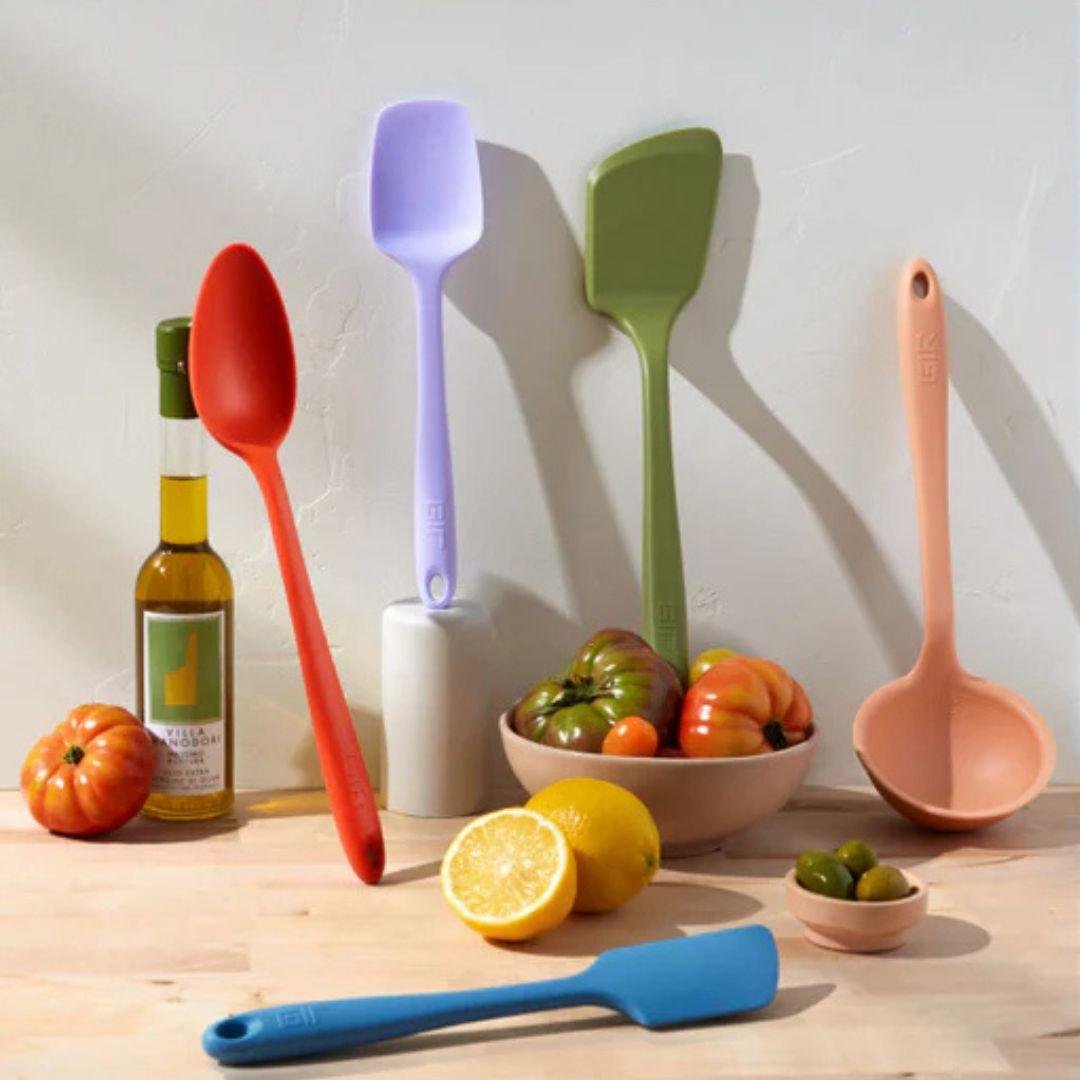-
Feed de Notícias
- EXPLORAR
-
Blogs
Ultimate Comparison: Spatula vs Turner in Baking and Cooking

When it comes to baking and cooking, the right tools make all the difference. Among the most commonly confused kitchen utensils are the spatula and the turner. Though often used interchangeably, they have distinct purposes. This ultimate comparison of spatula vs turner will help you understand their differences and decide which one best suits your culinary needs.
What Is a Spatula?
A spatula is a versatile kitchen tool, often featuring a flat, flexible blade. It comes in various forms—rubber, silicone, or metal. The main types include mixing spatulas, frosting spatulas, and scraping spatulas. Each is designed for different baking tasks.
Rubber or silicone spatulas are essential for mixing batters, scraping bowls, or folding ingredients without deflating them. Offset spatulas, on the other hand, are perfect for spreading icing on cakes or lifting delicate baked items.
In baking, spatulas are indispensable. Their flexibility and non-stick surface ensure that no batter goes to waste, and delicate pastries are handled with care.
What Is a Turner?
Turners are usually sturdier than spatulas. They come with a wide, flat blade and a long handle, designed to slide under food. A classic example is the metal or plastic turner used to flip pancakes, burgers, or eggs.
While they look similar to some spatulas, turners are made for lifting and flipping items during frying or grilling. Their rigidity makes them better suited for high-heat cooking and heavier foods.
The distinction becomes clear when comparing the two in terms of function and design. Turners are often slotted to allow grease or oil to drain during flipping, a feature not common in spatulas.
Key Differences: Spatula vs Turner
To break down the differences between spatula vs turner, let’s compare their design, material, and function:
-
Design: Spatulas are often flexible and narrow, ideal for folding, mixing, and spreading. Turners are broader and firmer, perfect for lifting and flipping.
-
Material: Spatulas are frequently made of silicone or rubber for baking. Turners are often made of stainless steel or heat-resistant plastic for frying.
-
Use Case: Use spatulas for scraping bowls or applying frosting. Use turners to flip pancakes, burgers, or fish fillets on a pan.
Understanding these differences ensures that you're not using a turner to scrape a bowl or a spatula to flip a steak. Each tool is crafted to perform best within its specialized role.
When to Use a Spatula
Baking requires gentle mixing and precise scraping, which is why spatulas are the preferred tool. Their soft and flexible heads can reach into corners and edges of bowls. Silicone spatulas can withstand heat, making them suitable for melting chocolate or stirring sauces on the stove.
In addition to mixing and scraping, spatulas are great for folding ingredients like whipped cream into a batter. Their flexibility helps retain air in the mix, essential for light and fluffy cakes.
If you're into decorating cakes or cupcakes, an offset spatula gives you a smooth and even layer of frosting. It’s a baker’s best friend when it comes to precision and finesse.
When to Use a Turner
Cooking foods like eggs, burgers, or grilled cheese sandwiches is where turners shine. Their broad, sturdy blade makes it easy to slide under food and flip it with confidence.
When working on a stovetop or grill, a turner provides the leverage you need. The slotted versions help drain excess oil, which is especially useful when cooking bacon or frying fish.
If you're grilling meat or working with heavier items, a metal turner with a firm grip and long handle is a must. It ensures safety and control, preventing food from breaking apart or slipping off.
Choosing the Right Tool: Spatula vs Turner
Your choice between spatula vs turner depends on your task. If you're baking a cake, scraping dough, or spreading frosting, go for a silicone or offset spatula. If you’re pan-frying or grilling, a durable turner is the right pick.
Many home cooks and professional chefs keep both tools within easy reach. While one excels in baking, the other dominates in high-heat cooking. Having both ensures you're always prepared, no matter the dish.
For multifunctionality, some hybrid tools offer the flexibility of a spatula with the sturdiness of a turner. However, specialized tools tend to perform better in their intended tasks.
Care and Maintenance Tips
Both spatulas and turners require simple care. Silicone spatulas are dishwasher-safe and heat-resistant, making cleanup a breeze. Metal turners should be hand-washed if they have wooden or non-heat-resistant handles.
Avoid using metal turners on non-stick pans to prevent scratching. Likewise, never expose rubber spatulas to extreme heat, as they may melt or degrade.
Storing them properly and cleaning after each use will extend their lifespan. Choose high-quality materials for long-lasting performance and better safety in the kitchen.
Final Verdict: Which One Should You Choose?
In the spatula vs turner debate, the best answer is: use both. Each has its unique role and purpose. Spatulas are the go-to for bakers, while turners are essential for frying and flipping.
Rather than choosing one over the other, understand their strengths and limitations. This way, you’ll always have the right tool for the right job—making your cooking and baking experiences smoother and more enjoyable.
A well-equipped kitchen doesn’t need dozens of tools, just the right ones. With this comparison of spatula vs turner, you’re now ready to make informed decisions that enhance both your efficiency and your results.





